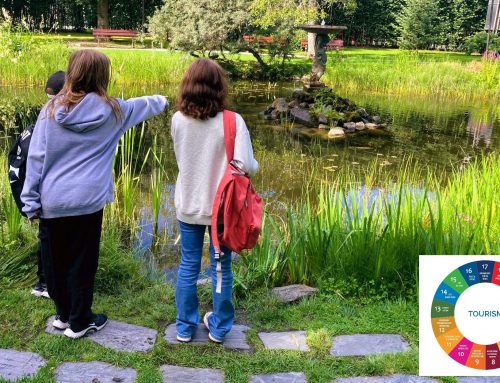I had four consecutive meetings yesterday, a new one starting sharp every hour from nine in the morning. Teams’ calendar application is easy: you can check your colleagues’ schedules, see if there are any overlaps, and book a joint meeting for even a large group. Meetings click nicely on the calendar with attachments and additional information.

This kind of a work day is quite typical for me, and I guess for many others as well: It is common that when the clock is approaching the next full hour, some participants write in the meeting chat that they have to jump directly to the next meeting. Many colleagues have told me that the number of meetings has increased dramatically in remote work when a meeting time has to be set for each small thing that normally would be discussed in the coffee room.
At yesterday’s second meeting, we laughed at various squeaking beeps that emitted by a colleague’s computer; she did not know what they meant. I told her that some evening I had watched a movie on the computer, left the browser open, and for some reason the music from the movie started playing in the middle of the next day’s meeting. It took time to figure out where the music was coming from. This happens when we spend both our work time and leisure by the screens.
At the fourth meeting, another colleague apologized for eating chocolate. I told her that before the meeting I had just rushed upstairs to grab a sandwich because there was no lunch break on my calendar. I made it back a minute before the start of the next meeting.
One o’clock in the afternoon, after four meetings, not a single thought moved in my head anymore. I hadn’t gotten up from the chair other than rushing to pick up a sandwich. All the meeting notes were undone, thoughts and plans unfinished. I opened the patio door and tried to look far away, breathe the autumn air.
Leave a 15-minute break between each meeting, for both yourself and your colleague.
Remote working has been found to be even more effective than office work (1,2) because all chatting and instantaneous conversations are eliminated. This so-called idle time would, however, be useful both for recharging our brain and for building community. It’s wonderful that I don’t have to run to the rain and rush hour in the mornings, but when you’re sitting alone at home by your computer, no one comes to your doorstep to chat and force you to have a break.
Digitalisation and remote working increase employees’ responsibility for their own well-being at work. It is known from research that in remote work we don’t have as much so-called empty time as in the office. Even breaks are easily spent by computer, browsing online content. It would be important to take breaks without screens so that the eyes and brain can rest. Moving yourself and stretching during breaks have also been studied to alleviate muscle pain caused by sitting in front of the screen (3).
Managing your own schedule is hampered by an efficient shared calendar, to which well-meaning colleagues add meetings without breaks. We can of course ourselves mark silent working hours and lunch breaks in the calendar, but I notice that I rather take breaks organically now in the remote working times. It feels important to be available when we are physically working in different places.
My friends, I suggest that from now on we book meetings to take 45 minutes instead of one hour whenever possible. Then we get a 15-minute break after each meeting to take notes, go to the fridge or enjoy autumn views on the balcony. After that, we are again focused and ready for a new meeting.
Annamari Huovinen
D.Sc.(econ.) Annamari Huovinen works as Communication and Marketing Specialist at Hanken in Helsinki.
Sources:
1. Choudhury, Larson & Foroughi (2019). Is It Time to Let Employees Work from Anywhere? Harvard Business Review. Aug.14, 2019.
2. Sutela, Pärnänen & Keyriläinen (2019). Digiajan työelämä – työolotutkimuksen tuloksia 1977–2018. Tilastokeskus, Helsinki.
3. Henning et al. (2010) Frequent short rest breaks from computer work: effects on productivity and well-being at two field sites, Ergonomics, 40:1, 78-91, DOI: 10.1080/001401397188396
Photo: Annamari Huovinen




